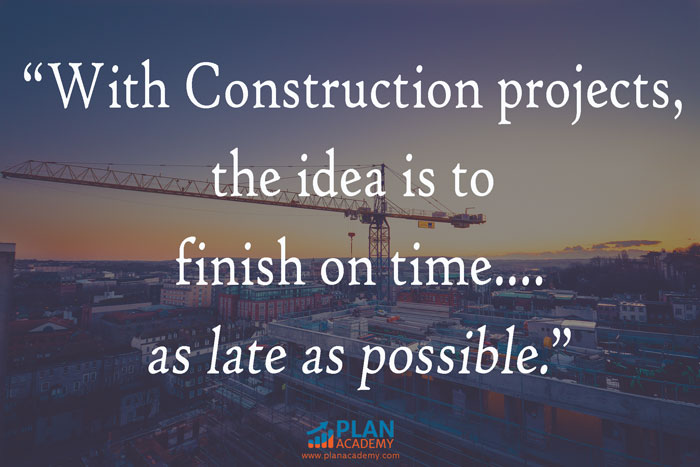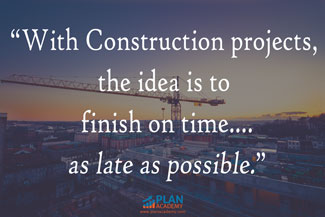Ever been confused by Primavera P6’s As Late As Possible constraint? If you’re a still familiarizing yourself with P6’s many features, you might not be sure what the As Late As Possible (ALAP) constraint does or when to use it.
I had a Plan Academy member ask me that question recently and decided to put this informative video together. I had a chance to practice my whiteboard skills and hopefully you’ll understand how the As Late As Possible constraint affects activities, and their Free Float in Primavera P6.
On a technical note, I was a bit disappointed with the auto whitebalance setting on my camera that led to the brightening and darkening of the video at random. But, as they say, why be perfect when good is good enough.
How do you use the As Late As Possible Constraint in Primavera P6 and what exactly does this constraint do?

Transcript:
Hey Plan Academy fans, it’s Michael back here in Plan Academy Studios with another Ask Plan Academy question. Today’s question comes from Avi. Avi is one of our members here at Plan Academy and he had some questions around how to use the “as late as possible” constraint. What exactly does the “as late as possible” constraint do? Great question. Let’s see if we can get into it.
Let’s use the whiteboard. I’ve drawn up a quick example here. I’ve got a simple network with a bunch of activities. I’ve got early dates up at the top and late dates down here at the bottom. When we apply any constraint, we know that those constraints can affect the early and late dates. And as a result, that can also affect both of our total float and free float calculations. What the “as late as possible” constraint does is it takes free float of an activity down to zero.
What’s free float? Free float is how much duration I have between an activity and its successor. Now, in a lot of cases when I have a bunch of activities string together, I have no free float here. These are all happening one after the other. But in this case because Primavera and CPM scheduling says, “Do thing as early as possible,” we’re looking at the early dates. I have seven days of free float here. That free float value also matches the total float value.
If I was going to draw this on a Gantt chart it will look something like this. I have my A activity here, my B activity here, my C activity. I know I’m not exactly to scale, but essentially D here will be schedule as early as possible – so it would be butted up against our start milestone here.
When you apply that “as late as possible” constraint, Primavera will take this activity and rescheduled it to be as late as possible, so not as early as possible but as late as possible. What will happen was D will end up over here.
It is the same duration as C so we’ll just make it the same. When D ends up as late as possible, then essentially, it’s taking the free float which is that duration here between the activity and the successor and it’s setting that to zero. That activity ends up basically budding up against its successor. That’s how the “as late as possible” constraint work.
When are you going to use this? Well, there are lots of examples. Any time you have a deadline and you need some things to happen right before the deadline, you can use that “as late as possible” constraint.
Now, you want to use some scrutiny around this. This activity C here also has to happen before the deadline. But depending on the nature of the work, you may not use an “as late as possible” constraint. It’s usually used for activities that can be done any time. They don’t have to be done as early as possible. They can be done any time in that duration but maybe we want to leave it for right before that deadline.
I’ll give you an example, “clean up the work site before the deadline”. I know I can do it somewhere in here but I’ll probably going to do it right before. Okay so that’s an example.
That’s our synopsis here on “as late as possible”. Hopefully, that clears things up for you. Come on back to Plan Academy and check out more of our videos soon.
If you have a question you’d like answered, post it to our Facebook page and we will queue it up for a response in this series.

